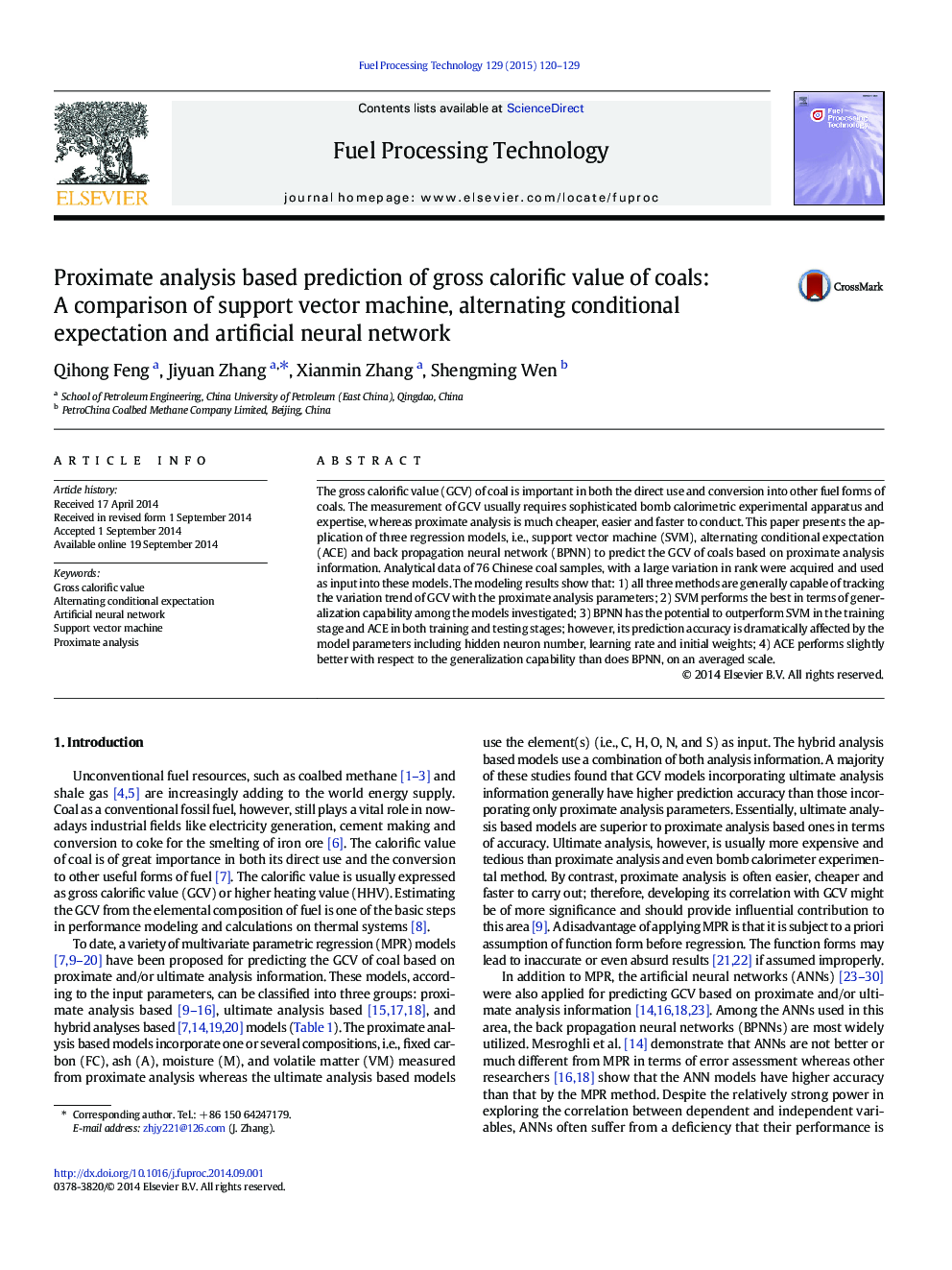| Article ID | Journal | Published Year | Pages | File Type |
|---|---|---|---|---|
| 209622 | Fuel Processing Technology | 2015 | 10 Pages |
•All methods perform better in the training than in the testing stage.•SVM performs the best in terms of generalization capability.•The performance of BPNN is significantly affected by its parameter initialization.•BPNN has the potential to outperform ACE if initialized properly.
The gross calorific value (GCV) of coal is important in both the direct use and conversion into other fuel forms of coals. The measurement of GCV usually requires sophisticated bomb calorimetric experimental apparatus and expertise, whereas proximate analysis is much cheaper, easier and faster to conduct. This paper presents the application of three regression models, i.e., support vector machine (SVM), alternating conditional expectation (ACE) and back propagation neural network (BPNN) to predict the GCV of coals based on proximate analysis information. Analytical data of 76 Chinese coal samples, with a large variation in rank were acquired and used as input into these models. The modeling results show that: 1) all three methods are generally capable of tracking the variation trend of GCV with the proximate analysis parameters; 2) SVM performs the best in terms of generalization capability among the models investigated; 3) BPNN has the potential to outperform SVM in the training stage and ACE in both training and testing stages; however, its prediction accuracy is dramatically affected by the model parameters including hidden neuron number, learning rate and initial weights; 4) ACE performs slightly better with respect to the generalization capability than does BPNN, on an averaged scale.
